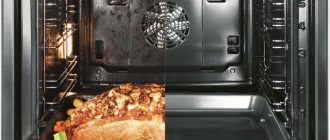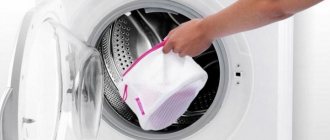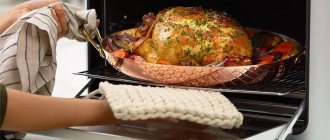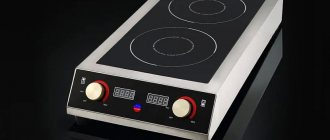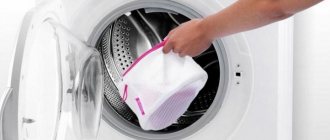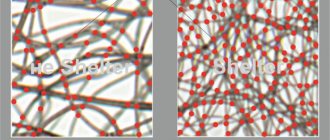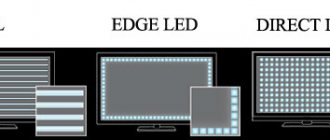Automatic washing machines and new detergents have made the work of housewives much easier, but white clothes still require special care. Over time, after repeated washings, items made of white fabrics develop a yellowish or gray coating. To get rid of this trouble, use various bleaches.
Types of bleaches.
In stores you can buy powdered and liquid products, divided by composition and principle of action: oxygen, optical and chlorine.
What does Persol look like?
Persalt is a substance called sodium percarbonate. It is mainly used for various household needs and for cleaning. Outwardly, it is nothing special; it looks like an ordinary fine white powder. 10% of this powder is usually active oxygen.
Interesting materials:
How to calculate the insurance part of the pension? How to count internal part-time workers in the average number? How to take a screenshot? How to move the header? How to sow carrots without thinning? How can you fly to Turkey now? How to go on a buckwheat diet? How to do the splits from scratch? How to formulate a desire? How to take a photo for a green card?
Compound
What does the budget fund contain:
- sodium carbonate peroxyhydrate;
- sodium carbonate.
These compounds break down during washing, releasing oxygen, and this element is responsible for removing stains. The other ingredients - soda and water - do not cause any harm to the environment.
It is percarbonate that is found in most oxygen bleach powders.
The indisputable advantages of "Persoli"
Using Persol oxygen bleach, the housewife receives a number of bonuses:
- Low price. Modern washing powders cost hundreds of rubles, this product with a similar effect costs half a hundred. Is it worth overpaying?
- Elimination of water hardness. Persoli powder dissolved in water makes it softer. This means that the laundry becomes a little softer after treatment with the product. Savings again - no need for expensive rinse aids,
- No scale formation. This is an important advantage, because it protects washing machines from this scourge, thereby increasing their service life,
- The laundry is disinfected, becomes fresh and truly clean,
- Colored and white kitchen towels not only remove tough stains, but also a special kitchen smell that simply washing in a washing machine cannot remove. The colors are perfectly preserved.
You can summarize the Persoli research by studying customer reviews. They also note the absence of an obsessive odor in things after treatment with this oxygen bleach.
Housewives who carefully follow the instructions are satisfied with the results obtained and recommend Persol as an effective and inexpensive means of whitening and stain removal, which is important. Things that are not tarnished by anything are the owner’s untarnished reputation.
Instructions for use
Despite the versatility of the whitening and stain remover, many buyers still do not know how to use it correctly to achieve an effective result.
It can be added to the powder and used in the washing machine. However, if the temperature is low (30-40 degrees), there can be no talk of any effectiveness. In addition, you need to take into account the specifics of the stains being washed. For example, for stubborn stains on kitchen towels, pre-soaking in boiling water is necessary.
Manufacturers recommend following the instructions, which indicate the dosage and rules of use. According to them, you cannot bleach things in rusty dishes and metal tanks. Do not bleach fabric items in rusty water. Consumption varies from manufacturer to manufacturer.
On average, 40 g of granules should be used for 4-5 kg of dry laundry for automatic washing. “Persol” is poured together with washing powder into the main wash chamber. The temperature should be at least 60 degrees.
Bleach is dissolved in water, after which washed clothes are placed in it. For 10 liters of water use 2.5 tbsp. l. products for processing products made from natural fabrics and 3.5 tbsp. l., when you need to remove stains from mixed and synthetic fabrics. The temperature of the container is brought to a boil, after which the heating is turned off. The exposure time is half an hour. In this case, it is necessary to periodically stir the laundry.
For activator washing, it is recommended to dissolve the powder in 10 liters of warm water, place the laundry there, leave for 20 minutes, then remove and rinse. Machine wash instructions are pretty much the same.
The product is added to the main compartment and washed using operating modes with rinsing and spinning.
Reviews and recommendations from housewives
I also make powder from laundry soap, but I enhance it a little. I rub soap into 2 pieces of 200 grams each. on a fine grater, 2 packs of soda ash, 4 packs of citric acid, 2-3 packs of Persol. I mix everything and drop in lemon and almond essential oil. The powder is ready, the laundry is soft, the color is not eaten away and no conditioner is needed.
I always add a lot of soda to the washing machine, it preserves some colors (such as red and orange), softens the water, when washing with detergents it removes the smell of chemicals, when washing with nuts it enhances the washing properties of nuts, disinfects, and when washing with soap it reduces foaming. The towels remain soft (but I also put fuzzy balls for dogs with them, they raise all the terry, the towels are like new.
A piece of baby soap on a fine grater. Pour into a liter of boiling water, carefully place until completely dissolved. Add 3-5 tsp. soda ash, wait until it gels. Switch off. Wait a little until it cools down - pour into a storage container. Done :)) it turns out to be a kind of thick jelly, I throw in a few spoons of it.
Washing gel soda ash (washing soda) - 40g Antipyatin soap (any household) -50g water - 1 liter. Grate the soap, pour in a glass of water, and place in a water bath. Place the remaining water in another pan, heat it and dissolve the soda. During this time, the soap has dissolved and we pour this soap solution into a pan with a soda solution
Lastly, add some EO you like, 20 drops. When the mixture has cooled, I lightly knead it with a masher or fork and transfer it to a plastic container. To wash clothes in a washing machine, I take 200 grams per drum (we calculate the required weight experimentally, each has its own dose.), you can put the gel directly into the laundry.
Source
Precautionary measures
In order to get only a positive effect from using the product, you must follow the precautions indicated on the packaging.
Namely:
- Avoid contact with eyes; if the product does get in, rinse with plenty of water or consult a doctor;
- In case of contact with skin, rinse thoroughly with plenty of running water without soap;
- Work with the product only with gloves;
- Do not mix with acids or organic solvents;
- Do not inhale dust from the substance;
- Keep out of the reach of children.
Particular attention should be paid to storing the product itself. Do not place it near hot objects or places regularly exposed to sunlight. It is advisable to store in a tightly closed jar, as the product dissolves well in a damp place.
Chlorine bleaches
Chlorine drugs are drugs that include:
- sodium hypochlorite (bleach);
- sodium hydroxide;
- surfactants (surfactants).
- The most popular and affordable bleaching agent is “Belizna,” which has been known since the mid-twentieth century.
- The following detergents are sold under the Belizna brand:
- “White Aqualon” – gel-con – gel concentrate with lemon fragrance;
- "White".
These household products are sold in chlorine-resistant plastic bottles.
Using chlorine bleaches, it is easy to restore the original appearance of white cotton and linen items. The active ingredient is sodium hypochlorite (NaOCl), a strong oxidizing agent. When using such aggressive preparations for bleaching fabrics, washing dishes, floors and plumbing, you must adhere to the dosage specified by the manufacturer in the instructions. To avoid irritation of the upper respiratory tract and skin of the hands, it is recommended to use thick rubber gloves and a respirator.
Advantages and disadvantages
Oxygen bleach is a good alternative to chlorine bleach. Such powders and gels can be used on both white and colored fabrics without compromising brightness. The gentle composition of “Persoli” will not damage synthetic or thin cotton fibers. Among the contraindications, only delicate silk is listed. Another plus is that both machine and hand wash are possible.
Persol successfully copes with such pollutants as tea, coffee, fruit and berry juices, and wine. Even old stains can be removed. Thanks to the stain remover, yellowness and grayness will no longer spoil your mood.
Additional positive actions include:
- water softening;
- scale prevention;
- disinfection of linen.
The cost of the product is within 50 rubles per pack of 200. This is another unconditional advantage.
Among the shortcomings, it is worth noting a slightly harsh fragrance with a citrus aroma. Also, the effect of bleach is observed only at high temperatures, but more on that in the next section.
Do-it-yourself washing powder: methods of preparation and evaluation of effectiveness
The modern chemical industry offers a variety of liquid and dry washing powders. The labels on the packaging assure: the products leave a pleasant aroma, are suitable for children's clothing, and do not dry out the skin. Should you trust the promises of manufacturers, or is it better to try making your own washing powder for an automatic washing machine?
In order not to aggravate the impact of harmful factors in the urban environment, many people think about the safety of their usual household products. Washing powders and liquids should not cause irritation, allergies, or migraines. Unfortunately, most products do not meet safety requirements. Therefore, we have to look for harmless analogues.
Store-bought or homemade: which is better?
Judging by the reviews of homemade powders, the opinion is mixed. Some housewives claim that there is nothing better than a product prepared at home. Others are skeptical about this idea. Natural products are valued higher, but not everyone is willing to spend personal time creating mixtures and gels when there is a ready-made chemical product in the store nearby. Everyone chooses for themselves what is best for them. Therefore, you should weigh the pros and cons of home remedies, try them and make your choice.
Composition of industrial products
The chemical content in store-bought products speaks in favor of homemade powders. What exactly are powder granules made of, and why are the chemical components dangerous? A detailed description of the composition is given in the table.
Table - Effect of components of industrial powders on the human body
| Compound | Why is it necessary? | Impact on the body |
| A-surfactants (anionic surfactants) | — Eliminate complex contaminants; - remove fat | — Remain on underwear and enter the body through the skin; - accumulate in organs; - inhibit metabolism; - weaken the immune system; - are not completely eliminated from the body |
| Sodium sulfate | — Activates the action of surfactants; – adds volume to the powder (used as a filler) | — Considered relatively safe for health; - often causes allergic reactions: dryness and irritation of the skin |
| Enzymes | Breaks down stubborn stains | — Considered relatively safe for the body; - damage fabrics (with frequent washing, clothes wear out faster); - disrupt the fiber structure |
| Phosphates | - Soften water; - weaken the electrostatic effect | — Keep surfactants on clothes; - dry the skin, disrupting barrier functions; - negatively affects metabolism; - aggravate chronic diseases |
| Phthalates | Retains fragrance | — Enter the body through the respiratory tract; - cause disturbances in the functioning of the endocrine system; - influence sexual development; - can lead to infertility |
| Optical brighteners | Reflects light, making laundry look whiter | — Penetrate through the skin; - accumulate in the body; - have a toxic toxic effect |
| Fragrances | Gives laundry a scent | — Provoke the development of respiratory tract allergies; - aggravate chronic asthma; - cause migraine |
Safe home analogues
To make homemade laundry detergent with your own hands, you need to understand which substances will deal with stains and which will help whiten. The components of modern powders can be completely replaced with household products. The table shows analogues of chemical components that perform washing functions no worse than professional powders.
Table - Analogs of chemical powder components
| Functions | Household products |
| Removing stains | — Borax (sodium tetraborate); - laundry soap |
| Whitening | — Soda (baking or ash); - lemon juice; - peroxide; - laundry soap |
| Water softening | — Vinegar solution; - soda |
| Fragrance replacement | Essential oils |
Do-it-yourself washing powder for an automatic washing machine: 7 recipes
To make laundry detergent at home, in addition to the ingredients, you should prepare materials and tools. You will need:
In accordance with the purpose (for whitening, children's clothing, disinfection), different mixtures are prepared, differing in the number of constituent substances. Below are seven of the most used recipes.

